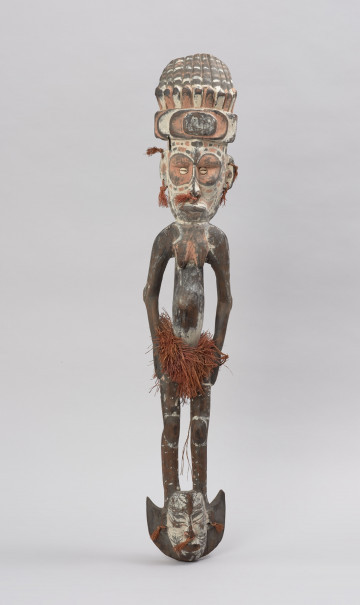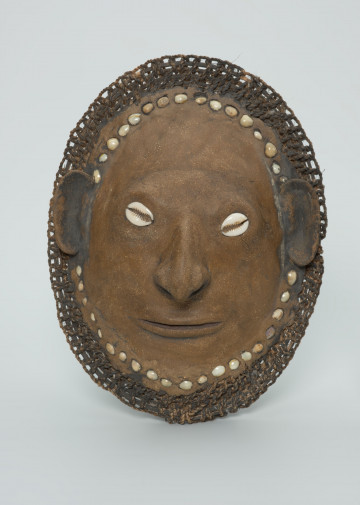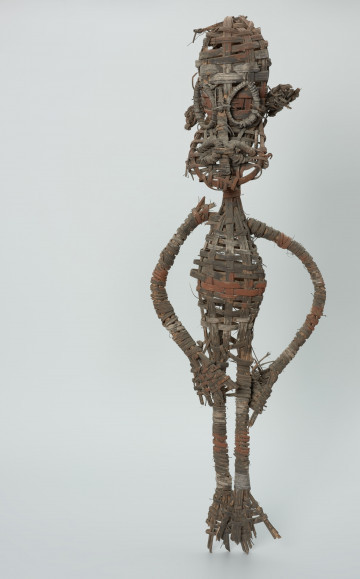
Hook for hanging bags
1951 — 2000
National Museum in Szczecin
Part of the collection: Art of Papua New Guinea
The presented ancestor figure was carved in the Sepik basin, in the Central Sepik region, where carving is the most popular form of artistic creation. This craft is mainly associated with the production of cult objects made only by initiated men. The National Museum in Szczecin purchased the sculpture in 1995 from a couple of ethnologists, Monika and Mieczysław Strzechowski, who describe the art of this region in the following way: Here, almost every village has created its own original style, which, however, remains within a specific common convention (...) where the basic model is always a human being. The large head sometimes gives the impression of a flat plate; at other times, it is unnaturally elongated. Eyes mostly round (...) often encrusted with shells - short anchor noses with well-defined nostrils. Sculptures depicting ancestors in Papuan art usually have disproportionately large heads to the rest of the body, often depicting very schematically. According to Papuan artists, the head symbolises the spiritual powers of man, which is why it is strongly accentuated. It is believed that the forces concentrated in the human skull, which are released at the moment of death, will ensure prosperity and success for the whole community. This belief gave rise to the cult of skulls, which is known throughout Melanesia. Many protective measures were taken not to lose the valuable cult powers of the skulls. It was believed that the ancestors’ spirits could not live in old and damaged skulls. Decaying skulls had to be replaced by new ‘containers’, usually wooden or masks. The ancestor's soul, which after death resided in the skull, was transferred to the wooden image, which automatically became a powerful cult object. The replacement of skulls with carvings and masks was also encouraged by colonial and missionary authorities who introduced European burial practices for the dead in New Guinea and banned the use of their heads.
Katarzyna Findlik-Gawron
Author / creator
Dimensions
cały obiekt: height: 115,5 cm, width: 26,4 cm
Object type
sculpture
Creation time / dating
Creation / finding place
Identification number
Location / status

1951 — 2000
National Museum in Szczecin

około 1980 — 1985
National Museum in Szczecin

1951 — 1995
National Museum in Szczecin
DISCOVER this TOPIC
Museum of King Jan III's Palace at Wilanów
DISCOVER this PATH
Educational path